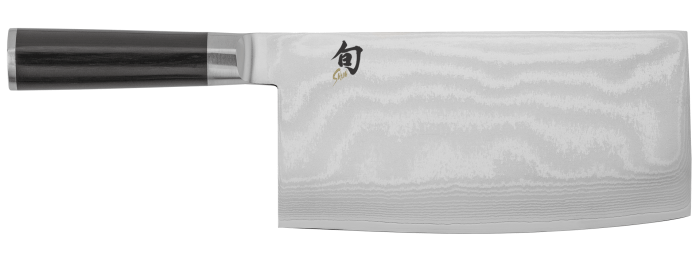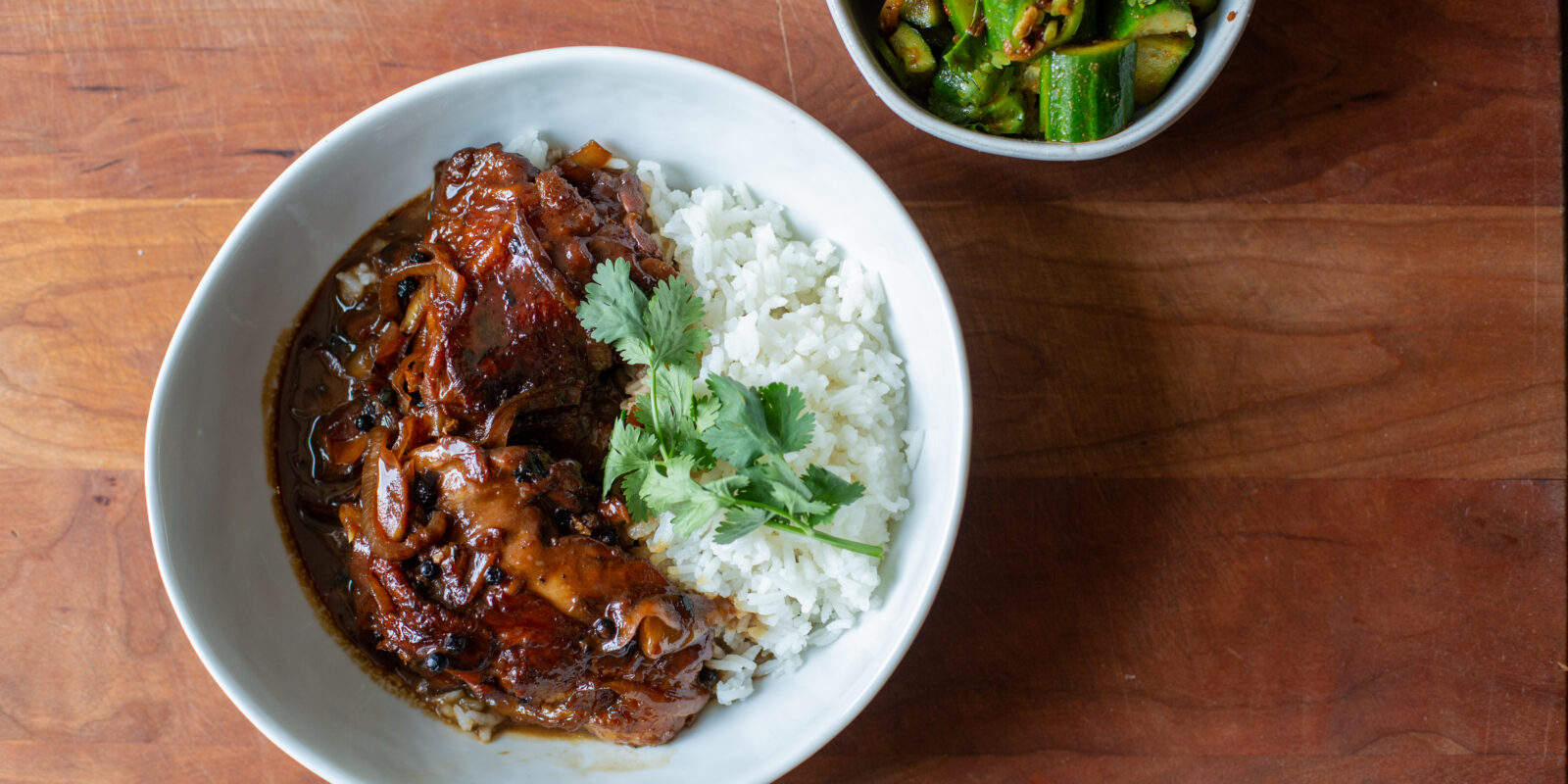An Easy Sweet, Sour and Savory Braise
By Andrew Zimmern
Adobo is a staple of Filipino cuisine, the national dish that showcases the balance of Filipino flavors and influences from the Spanish occupation. At its core, it’s a protein braised with vinegar, soy sauce, garlic, and spices, but there are as many takes on this dish as there are islands in the Philippines (that’s more than 7,000…). And while disagreements abound on the “right way” to make it, I am hard-pressed to think of a dish that is as universally loved, that requires so few ingredients, that is so simple to make as chicken adobo.
This recipe is the version I like to make for my family, a dish the whole household clamors for on a monthly basis. I use bone-in pieces for the flavor depth. I have seen recipes that don’t use coconut milk; I prefer ones that do. The use of coconut vinegar is great, and you should endeavor to add it to your pantry, but apple cider vinegar mixed with Chinese black vinegar works great as well. And remember, the secret to this dish is neither over- or under-reducing the sauce. Keep tasting as you go, keep checking the body and mouth feel.
Filipino food is so special, I just adore it. I love the vibrant and diverse flavors, blending sweet, sour, and savory tastes in a single dish. I love the wide variety of ingredients from tropical fruits to the abundance of seafood, pork, and rice dishes. Filipino cooking methods like this adobo braise results in rich and complex flavors.
Knives used:

Shun’s boning knives are perfect for trimming the silver skin from a tenderloin or roast or even making your own cutlets. The narrow blade reduces the drag as you cut against the meat, so cutting is fast and easy. When it comes to filleting fish, the blade’s six-inch length is just right to glide through the body of the fish, quickly removing bones and skin.

This Chinese cleaver is a large, squared knife with a very wide blade. It is a multi-purpose knife—the Chinese answer to a chef’s knife. It’s especially useful for processing vegetables, especially larger ones such as cabbage. Yet this cleaver is nimble enough for almost every kind of cutting and slicing, from fruits and vegetables to a full array of proteins.
Filipino Chicken Adobo
Ingredients
- 1/4 cup canola oil
- 1 whole chicken, cut into 8 pieces (or 8 bone-in skin-on chicken thighs)
- 2 yellow onions, halved and sliced
- 10 garlic cloves, sliced or crushed
- 1 cup really good soy sauce
- 1 can (13+ ounces) unsweetened coconut milk
- 1 cup coconut vinegar (see note)
- 1/4 cup brown sugar
- 1 tablespoon black peppercorns
- 6-8 fresh bay leaves
- Steamed rice, for serving
- Cucumber salad, for serving
Instructions
Heat the oil in a large skillet or Dutch oven over medium-high heat. Season the chicken with sea salt. Cook for about 4-5 minutes per side, until nicely browned and transfer to a large plate. If there is a lot of rendered fat, tip most of it away and add the onions, stirring occasionally until lightly caramelized.
Add the chicken back to the pan, followed by the garlic, soy sauce, coconut milk, vinegar, brown sugar, peppercorns and bay leaves. When simmering well again, reduce heat to low and cook for about 45 minutes, until consistency is thick enough to coat a spoon nicely. I like to flip the pieces once or twice to promote even cooking. If you are done with the cooking time and sauce is still too thin for some reason, remove chicken and simmer the sauce for 10 more minutes. Then add chicken back to pot. Remember you aren’t making gravy, this sauce should have body but not be ‘thick’. After cooking, taste for seasoning. Serve with steamed rice and spicy cucumber salad.
Notes:
- If you can’t find coconut vinegar, you can use half apple cider vinegar and half Chinese black vinegar or all cider vinegar for substitution.
- For my cucumber salad, I smash Persian cucumber pieces and toss with salt, black vinegar, chile crisp and some cilantro leaves.



